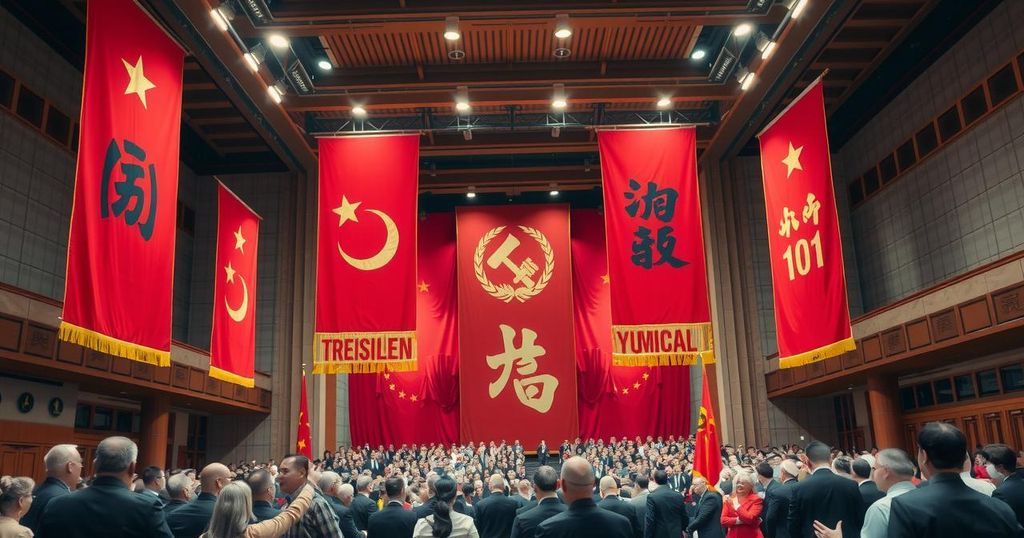China’s Shift from Diplomatic Courting to Tariff Defiance Against the U.S.
China has transitioned from courting President Trump to adopting a defiant stance against U.S. tariffs, mobilizing government officials and launching international outreach. The country’s new ‘wartime’ posture reflects a commitment to resist U.S. pressure while also focusing on domestic economic stability. High-level diplomatic communications have stalled, leading to increased retaliatory measures and strategic responses amid ongoing trade tensions.
In recent developments, China’s approach to trade relations with the United States has undergone a significant transformation, shifting from an initial effort to establish amicable ties with President Donald Trump to a resolute stance of defiance against U.S. tariffs. Officials in Beijing have adopted a “wartime footing,” while launching a diplomatic campaign to garner international support against the tariffs imposed by the U.S.
Chinese officials in the foreign affairs and commerce sectors have been instructed to remain available around the clock, canceling personal vacations to emphasize a serious commitment to address the trade tensions. Propaganda officials are actively involved, sharing defiant messaging reminiscent of past national sentiments.
Despite previously attempting to create channels of communication during Trump’s administration, Beijing’s strategy has now pivoted to one of retaliation and resistance. Chinese leaders had at one time aspired for a cooperative relationship with the U.S., but following Trump’s aggressive tariff policy, a hardline stance has emerged, indicating China’s willingness to confront U.S. actions more directly.
Chinese diplomats have reached out to allies and other nations facing similar trade pressures from the U.S., aiming to unify opposition against Trump’s tariffs. Statements from the Chinese foreign ministry assert the nation’s determination to resist U.S. hegemony and engage in constructive dialogue based on mutual respect.
Following initial retaliatory reactions, President Trump accused China of panic, indicating a perception of vulnerability. U.S. officials now contend that the trade standoff is exacerbated by China’s significant trade surplus and systemic abuses within the global commerce framework that are unresolved.
Engagement attempts from both sides continue, albeit with limited success. Chinese officials have struggled to establish direct discussions with high-level U.S. counterparts under the current administration, leading to frustration and stalled diplomatic negotiations. Lower-level conversations may still occur, though many established working groups have encountered freezes due to broader geopolitical tensions.
In response to the latest round of tariffs, China has developed a strategic defensive playbook, anticipating U.S. actions. This comprehensive strategy includes not only retaliatory tariffs but also specific controls over market access for U.S. companies.
As part of its public messaging, China is focusing on rallying domestic support, promoting resilience, and adapting its economic growth model towards increased domestic consumption rather than reliance on exports. This shift is coinciding with concerns over real estate market developments. Overall, China is signaling a unified front, highlighting its intention to resist U.S. pressure and articulate its position globally while channeling efforts toward internal economic stability.
The evolution of China’s trade policy relations with the United States reflects a marked shift from initial diplomatic engagement under President Trump to a current posture of defiance against U.S. tariffs. China’s government has mobilized its bureaucratic and diplomatic resources to confront trade pressures while simultaneously fostering international alliances. This multifaceted response underscores a firm commitment to resist external hegemonic influences, pivot towards domestic economic growth, and maintain a resolute stance in the face of U.S. trade policies.
Original Source: www.usatoday.com




Post Comment